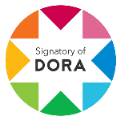Right to education in children and adolescents with disabilities
DOI:
https://doi.org/10.35381/racji.v6i1.1490Keywords:
Education rights, difficulty in learning, computer aided teaching, learning method, human rights. (words takenfrom UNESCO Thesaurus).Abstract
The general objective of this study is to legally analyze the right to education in children and adolescents with disabilities in Ecuador. The investigative work was sustained, from the quantitative approach, by means of the investigation, collection and critical documentary analysis, bibliographic reference and research studies, from the interpretation of the right to education in children and adolescents with disabilities in the Ecuadorian context, in this sense, from a documentary bibliographic design reflecting on laws, norms, agreements, international treaties, theses, which led to the production of relevant information. It is concluded that students with disabilities from the "Julio Espinosa" Educational Unit, in the Puyango canton, are currently excluded by the application of the virtual modality, adopted after the health emergency; the measures and strategies proposed fail to favor special and specialized education for each case of disability and face the lack of technological knowledge.
Downloads
References
Álvarez, C. (2018). La importancia de la educación en el siglo XXI. Campaña Mundial por la educación. Ayuda en acción y el derecho de la educación. [The importance of education in the twenty-first century. Global Campaign for Education. Help in action and the right to education]. Recuperado de: https://n9.cl/xztx7
Asamblea Nacional Constituyente de la República del Ecuador, (2008). Constitución de la República del Ecuador. [Constitution of the Republic of Ecuador]. Montecristi. Registro Oficial 449 de 20-oct-2008. Recuperado de https://n9.cl/sia
Asamblea Nacional de Ecuador (2014). Ley Orgánica de Discapacidades. [Organic Law on Disabilities]. Registro Oficial 263 de 9 de junio de 2014. Recuperado de: https://n9.cl/ts5aj
Asamblea Nacional de Ecuador (2011). Ley Orgánica de Educación Intercultural. Registro Oficial Suplemento 417. [ Organic Law on Intercultural Education]. Recuperado de: https://n9.cl/en2uy
Ministerio de Educación. (2020). Informe estratégico del sistema educativo nacional en tiempos de coronavirus.[Strategic report of the national education system in times of coronavirus]. Recuperado de: https://n9.cl/ya57
Organización de Naciones Unidas. (2020). La educación especial frente a la emergencia sanitaria. [Special education in the face of the health emergency]. Recuperado de: https://n9.cl/dq7j
Robles, L. (2019). La educación y su alcance como derecho. [ Education and its scope as a right]. Quito. Universidad Central del Ecuador. 1(2) 45. Recuperado de: https://n9.cl/8q9uj
Sanabria, I. (2020). Educación Virtual, oportunidad para “aprender a aprender”.[ Virtual Education, an opportunity to "learn to learn"]. Madrid. Fundación Carolina. Recuperado de: https://n9.cl/bbg67
Soreano, B. (2020). El derecho a la educación durante el Covid 19. [ The right to education during Covid 19]. España, Universidad de Sevilla. Análisis, propuestas y retos para la educación del alumnado con discapacidad intelectual o del desarrollo durante el confinamiento. Recuperado de: www.plenainclusion.org
Soto, A. (2016). Educación física en niños con necesidades educativas especiales. [ Physical education in children with special educational needs].Universidad de Huelva. Universidad de Huelva. Recuperado de: https://n9.cl/kwp4k
Vásquez, G y Fernández, L. (2016). Las tecnologías de información y comunicación: consideraciones metodológicas para la educación especial. [Information and communication technologies: methodological considerations for special education]. La Habana: Pueblo y Educación. Recuperado de: https://n9.cl/x28nb
Villabela Armengol, C. (2015). Métodos en la investigación jurídica algunas precisiones. [Methods in legal research some clarifications]. Instituto de Investigaciones Jurídicas de la UNAM. Recuperado de: https://n9.cl/iuarn
Published
How to Cite
Issue
Section
License
CC BY-NC-SA : Esta licencia permite a los reutilizadores distribuir, remezclar, adaptar y construir sobre el material en cualquier medio o formato solo con fines no comerciales, y solo siempre y cuando se dé la atribución al creador. Si remezcla, adapta o construye sobre el material, debe licenciar el material modificado bajo términos idénticos.
OAI-PMH URL: https://fundacionkoinonia.com.ve/ojs/index.php/Iustitia_Socialis/oai










